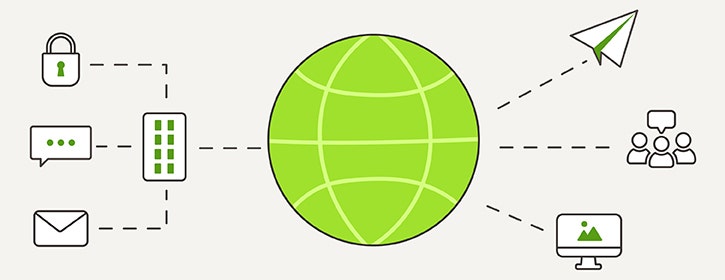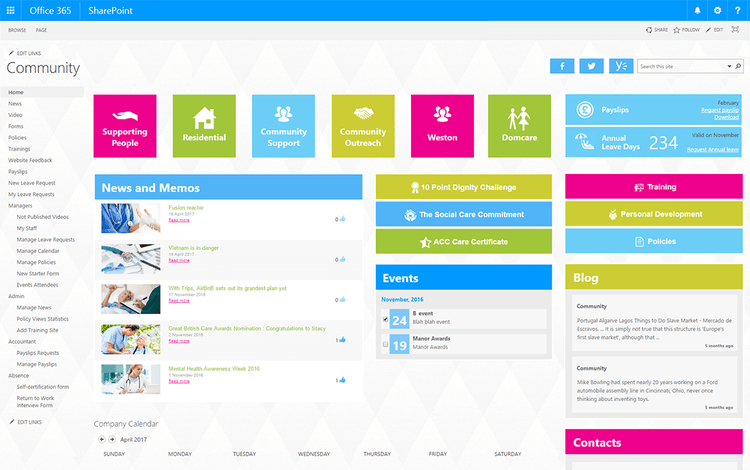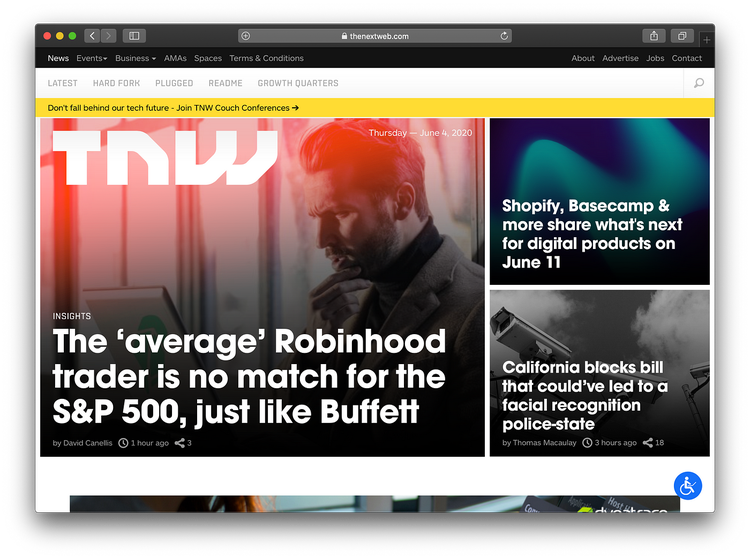Intranet vs. Internet: What’s the Difference? (+3 Tips to Boost Intranet Adoption)

Did you know that more than a third of those in charge of internal communications don’t have a long-term strategy?
While leadership may be laser-focused on customer-facing content, it’s just as important to intentionally communicate with your employees. After all, not keeping your workforce in the loop through transparent communication can lower employee satisfaction and retention, weakening your brand’s overall reputation.
Having a company intranet is a great way to mitigate those risks, but unfortunately, employee usage is generally low. The trick is to thoughtfully curate an interface that doesn't feel outdated or difficult to navigate.
With BambooHR®, you can transform a static landing page model into a personalized and interactive hub, putting all of the information and resources your employees need to succeed right at their fingertips. Read on to learn what an intranet is and how to make yours the go-to platform that keeps everyone on the same page.
Gather Powerful Insights, Create a Better Employee Experience
Don't leave your company culture to chance. With accurate, reliable employee surveys in BambooHR, you'll gain the insight you need to prevent burnout, improve morale, and stop premature turnover in its tracks.
What Is an Intranet?
An intranet is similar to the internet, but it's an internal network that's only accessible to a company’s employees. Organizations use intranet websites for many reasons, such as sharing corporate communications, centralizing company resources, making it easier to access business applications (e.g., Google and Slack), and enabling employee self-service for HR and IT matters.
Intranet vs. Internet: What Are the Key Differences?
Source: What Is the Difference Between Internet and Intranet?
A Brief History of the Intranet
Before intranets existed, employees had to share information manually. People across teams, departments, and offices physically exchanged documents, made phone calls, and held face-to-face meetings.
Then, Intranet Genie—the first intranet solution specifically for employee communication and collaboration—debuted in 1996. In reality, it wasn't a website but rather a server software suite with several applications installed on individual computers that enabled document sharing, employee discussions, electronic messaging, and more.
The popularity of the World Wide Web led company intranets to evolve into web portals. In 1999, IC launched and was one of the first web-based intranet software products available for organizations. Since it only required a common web browser, it reduced development, implementation, and management costs, providing an appealing alternative to its predecessor.
During this time, several businesses took to the intranet but were not using it effectively and most didn’t have a single company-wide internal home page. Poor designs and disjointed user experiences negatively impacted employee productivity.
Back in 1999, it was predicted that the worldwide cost of poor intranet usability would grow to $100 billion by 2001. To combat this, experts recommended that an intranet portal home page have a:
- Directory hierarchy to structure all content on the platform
- Search field to make navigation easier
- Current news section about the company and employee activities to cut down on excessive emails and memos
Eventually, intranets became more interactive thanks to social media. New features were added, such as user profiles, activity feeds, and blogs. Plus, video and audio content became popular elements to incorporate.
Today, the intranet combines social features with cloud-based platforms to form digital workspaces. Meaning, employees can find all the necessary applications, services, and information in one place from any device.
Intranet Example
Microsoft SharePoint is a web-based collaboration platform that launched in 2001. What began as a document management and storage system has continuously evolved through the years with added features to make it easier for companies to create customized intranets.
Today, over 200,000 companies and 190 million people exchange information, organize content, and automate workflows via SharePoint to keep employees engaged and well-informed.
3 Tips for Creating an Intranet Employees Actually Want to Use
Just like your company's client-facing website, you want your intranet platform to look appealing, feel intuitive, and serve as a highly functional resource. Here are a few best practices for creating a user-friendly design:
Give It a Modern Interface
When you think of a company intranet, you probably think of a website that looks something like this:

SharePoint 2017
This screenshot is from 2017, but the design is reminiscent of 2007. While this home page has a directory, search field, and news section, it's crammed with too much information, creating an overwhelming user experience. Aspects such as employee challenges, certificates, blogs, and more, all loudly compete for your attention—causing your eye to aimlessly wander, never deeply concentrating on any one feature.
Both Gen Z and millennial employees are tech natives, but it's still imperative for employers to provide the necessary technology for them to do their work well. So if you’re looking to boost employee efficiency, it’s key for your intranet to have a clean, simple layout that anyone can navigate, regardless of how tech-savvy they are.
Take Cues From Popular Website Trends

The Next Web 2020
Modern websites use simple and attractive designs, geo-targeted information, rich media, and more. While websites and intranets serve different purposes, external media inevitably affects how employees expect to consume information, making it critical for intranet solutions to keep pace with changing norms.
For instance, let’s take YouTube—the second most visited website in the world with over two billion viewers. YouTube is a video-first platform with advanced personalization features (it recommends videos for users to watch based on the type of content they’ve engaged with in the past). The platform’s success is attributed to its lack of gatekeepers. Just about anyone can upload a video to YouTube, making information free and accessible.
Based on YouTube’s success, companies may want to consider incorporating high-value video content into their intranet to break up text and make information more digestible. Relatedly, personalization capabilities that suggest content relevant to an employee’s past searches could make for a more seamless user experience.
Make It Social—Not Static
On average, 65% of employees use their company intranet, but 47% of people don't find their platform very user-friendly. This means that companies are failing to reach a sizable number of employees on any given day.
To put this issue into perspective, let’s think about it from personal experience. How many times have you visited a company’s website in the last 24 hours to get information? Now, think about how many times you've gone to X (formerly Twitter), Instagram, or Facebook in that same time period.
If you're one of the 4.8 billion users worldwide who spend nearly 2.5 hours scrolling social media each day, it's easy to see how using a similar model may work better. Drawing inspiration from the tech we use and love in our personal lives can help boost intranet adoption rates in the business world.
Rather than cramming as much information as possible onto the home page, a layout similar to a social media newsfeed with personalized content has a greater chance of piquing employee interest. Plus, allowing employees to like, comment on, and share intranet content—just like they do on their favorite social media platforms—facilitates two-way conversations with leadership, helping people feel more valued and engaged at work.
With these three tips in mind, you can transform your company’s intranet from an occasional reference check to a daily destination, enhancing communication, collaboration, and overall productivity.
Get the Definitive Guide to Company Culture
A vibrant company culture which supports and nurtures employees—and helps your organization achieve its goals. Created by BambooHR experts, our guide offers a step-by-step plan for leveling up your company culture.